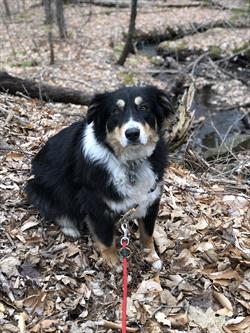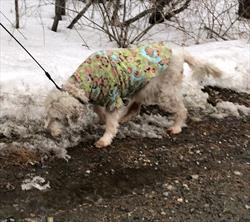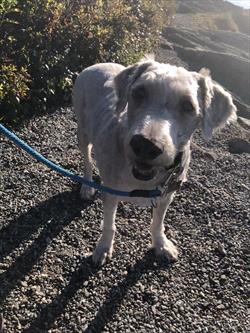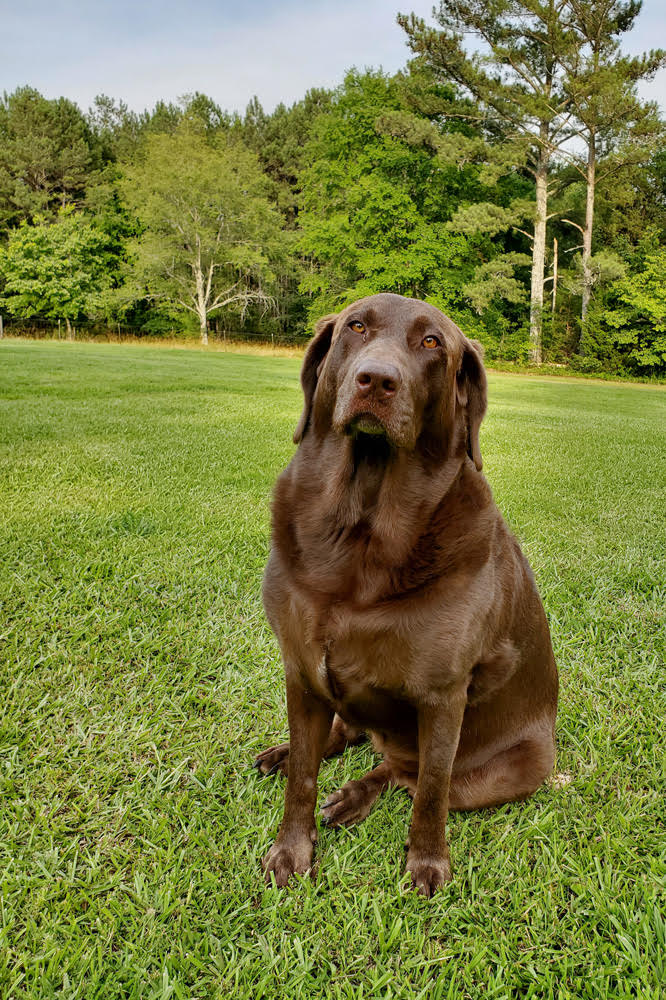Great Advice from Angie Woods!
Check out this great short video from Angie Woods of Dog Psychology & US Canine. Some great tips for developing a better relationship with your dog!
Check out this great short video from Angie Woods of Dog Psychology & US Canine. Some great tips for developing a better relationship with your dog!
House Training Adult Dogs – June 8, 2022 (Published) Breanna Norris, KPA CTP
When house training an adult dog, the process is the same as with a new puppy. Although you may have been told your new adult dog is house trained, that may not be the case in your home. When first brought home, you may not be able to recognize your dog’s need to go out and they do not know how to go out.
Keep slip-on shoes and a leash near the door so you can quickly take them out when they wake up, after they eat, when they are sniffing for a spot, or looking restless. Be patient and take them outside frequently.
Keep treats handy near the door to grab as you go outside to your dog’s designated potty area. As soon as your dog goes to the bathroom, reward them with several of their favorite treats. Shower your dog with treats when they go to the bathroom outside, don’t wait to treat them after they come back in.
Giving so many treats like this may be frightening to your dog, causing them to refuse the treat. If this happens, remain calm and try putting the treat on the ground near them. If they still refuse the treat, try reinforcing another way, like going back inside or letting them sniff the grass or a tree. You can also try tempting them with other treats to discover what your dog considers valuable.
Adult dogs may prefer to potty on a specific surface. A dog that has spent their life in a kennel may prefer concrete over grass because this is familiar to them. To encourage your dog to go on different surfaces, try:
Some dogs may have been punished for toileting in the house, causing them to avoid going to the bathroom in front of people. Take them out in a safe area on a long leash or someplace where they can potty behind a tree or bush to give them privacy.
Since some dogs have never gone to the bathroom while leashed, try using a lightweight long line and be sure to keep the leash loose, or go to a safely fenced-in area so they do not need to be leashed. For small dogs, an exercise pen on the grass can often work.

Making accommodations may be short-term while you find what your dog prefers. Eventually, you can transition your dog to the area you choose. Help your dog understand where you want them to go by using a visual such as wood shavings in the area. Reinforce each time they toilet on the shavings, using fewer shavings until eventually your dog no longer needs the visual.
Similar to training a puppy, your adult dog should not have free run of the house. Use exercise pens, baby gates, or doors to keep your dog with you until they are fully house trained and let you know they need to go out. It can take several months to fully housetrain. For accidents inside, use a good enzyme cleaner to remove odors to help prevent possible future marking behavior.
If you have any concerns about your dog’s bathroom habits, discuss the issues with your veterinarian to rule out medical conditions.

Here is some great information from Angie Woods at US Canine & Dog Psychology 101 —
Baby, it’s cold outside… In typical Georgia fashion, the weather has decided to plummet more than forty degrees in a matter of days. It can be a challenge to adjust, for you and your dog. As humans, we tend to hunker indoors with a warm mug, a blanket, and a TV. However, your dog’s idea of a good time is to explore. Dogs in the wild spend each day on the move, largely in search of food. Temperature changes may mean changes in food supply or hunting patterns. Regardless, they want OUT when all you want to do is stay IN. It can be hard to dawn your parka and ‘adventure’ into the wilds of your neighborhood. Remember: Dogs need regular and consistent exercise and mental stimulation. A bored dog with too much energy can quickly turn frustrated and destructive. Regular exercise supports their overall mental and physical well-being and keeps their behavior in check. If weather conditions prevent outdoor activity, get creative providing some exercise indoors. We offer a few ways to do just that. Check out our YouTube video for all the specifics.
Remember that your dog relies on you to be the leader and to give them what they need both physically and mentally so they can be happy and well-adjusted. Find us on Instagram or Facebook and share your cold weather adventures! You can also drop us a video or photos in our Dropbox! You can check out our website at uscanine.com
Cheers to you, your dog, and your new relationship together!

Here is a great link from Angie Woods of US Canine and Dog Psychology 101 on Separation Anxiety and your dog. Take a few minutes to view the video – we hope is it helpful!
Behave Atlanta has created this video exclusively for ALR as a virtual version of their “dog starter kit” class for anyone bringing a new dog into the home. They cover everything from house rules to beginning training techniques. Amy and Lillian answer the frequent “what do I do when?” questions and give you a tool kit for approaching the most common hurdles of the first month. It’s free, it’s only an hour, and you can watch it in the bathtub. What’s not to like? Click here to Watch!

 This is a great article from I Heart Dogs! Recently ALR has adopted out several puppies and very young Labs. We thought this would be very helpful information! Teaching your puppy or young dog sooner versus later could potentially save its life one day!!!
This is a great article from I Heart Dogs! Recently ALR has adopted out several puppies and very young Labs. We thought this would be very helpful information! Teaching your puppy or young dog sooner versus later could potentially save its life one day!!!
From I Heart Dogs:
Bringing home a new puppy is one of the most exciting things you can do. Everyone wants to snuggle, play with and take pictures of the furry bundle of joy. Because of their size, cuteness and our human tendency to think of them as “babies,” training your new puppy may be the furthest thing on your mind. However, by the time you get your puppy at around 8 weeks old, they are definitely able to learn. This mean if you don’t teach them what you want them to do, they will teach themselves things. So, start your puppy off on the right paw by making sure you teach him the following 10 cues every puppy should learn as soon as possible.
This one is so important for the safety of your puppy! You want to be able to prevent him from eating or chewing on something that may be harmful. Start with something easy like a toy!

This cue is great to help your puppy learn appropriate toy play including ending a game of tug or dropping a ball for fetch. It also rewards them for giving you something (because you give them a treat or another toy) instead of guarding it. Finally, it can be used as a back-up if for some reason your leave it cue failed or you were too slow to give it.

Your puppy should learn to respond to his name by giving you full eye contact. That way, you know he has your full attention should you need to give another cue (such as come, or leave it).

Another equally important cue for your puppy’s safety. Don’t let your dog off leash anywhere until he has a reliable come.

Sit is a good cue to teach your puppy to help with manners. It can be used to greet people, before you throw a ball, etc. You can also teach a down instead, if you prefer, or even better, both.

Stay is a very important cue, again for your dog’s safety, but also your own. For example, stay is great when you are coming in the door with something heavy or bulky and you don’t want your dog to come and trip you up. Stays are also good for greeting people at the door, so your dog doesn’t bolt out of it. And, of course, it’s important if you are going to do almost any dog sport later in life.

While this cue isn’t imperative to your dog’s safety, it does help with one of the biggest complaints owners give – jumping up. And, if you teach when your pup is teeny tiny, you can avoid the problem all together when he gets bigger.

“Heel,” “with me,” “side,” whatever you want to call it – walking next to you on a loose leash is taught easiest right away. There is no reason why your little 8 week old pup can’t start learning on- and off-leash manners inside the house! Work on it just a couple minutes a day and you won’t have to worry when your dog gets bigger and stronger, he will already have nice manners.

This cue is great to teach your puppy because it encourages them to focus on you. Those obedience dogs that spend the entire time staring up at their owners got their start with a cue like “watch me,” which simply means “give me eye contact.” You can build it up to be as long of a look as you like.

#10 – Emergency Come
Getting dogs to come can be tricky. Many of us have our “come” cue that our dog eventually responds to, but it’s not critical if they stop to go potty before they get to us, or to sniff a tree. However, there are times when you need your dog to come now. Sometimes, it may be because of an emergency – like they are in the middle of the road and car is coming. Other times, you just may be in hurry. Having a second come cue that means “come immediately at a run” is a great cue to have up your sleeve. Teaching it young will help solidify it for years to come.
